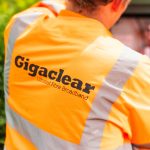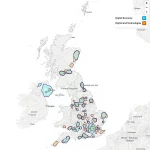Openreach Launches Alternative UK Analogue Phone Line Product

Openreach has today notified UK telecoms providers that their SOTAP Analogue product will, following a “successful pilot” (here), get its full commercial launch on 28th October 2025. This is a phone line service that does NOT require broadband to work and will be targeted at vulnerable users who would otherwise struggle with migrating to an All-IP (internet) based phone service.
The industry-led legacy phone service switch-off (PSTN/WLR) was last year delayed to 31st January 2027 in order to give broadband, phone, telecare providers, councils / CNI users and consumers more time to adapt (details). The focus of this remains on the 1.8 million UK people who use vital home telecare systems (e.g. elderly, disabled – vulnerable users) that aren’t always compatible with digital phones, usually because telecare providers were slow to adapt. But we should add that, for everybody else, many providers will still be working toward the original Dec 2025 deadline.
Openreach and BT have introduced a number of new complementary services and products to support this change, one of which is their “temporary” Pre-Digital Phone Line (PDPL) product. This is supported by Openreach’s SOTAP Analogue (Single Order Transitional Access Product for Analogue) product, which is an exchange-based IP-voice service that replicates how the old service worked, albeit over a more modern network (i.e. it does NOT require broadband, new kit, an engineer visit or battery back-up to function).
Advertisement
Just to be clear. This is a standalone product that will be available “nationally”, even in areas that have already been upgraded to all-IP broadband technologies (e.g. FTTP and FTTC / SOGEA). However, this is only intended to be available to vulnerable and edge case users on existing lines (not new customers), such as those who would otherwise “face challenges” in migrating to normal internet (IP) based phone solutions by the deadline.
According to today’s new briefing, SOTAP Analogue will now officially become commercially available from 28th October 2025 and attracts an annual rental of £127.80 +vat (£10.65 per month). But the price you pay at retail will be higher than this due to the need to add 20% VAT, profit margins and account for other service features/costs etc. Migrations to this line will also attract a connection fee of £30.91 +vat (see wholesale costs).
However, this remains a temporary solution, which allows enough time for the most challenging / vulnerable and CNI users to find a modern digital solution. But it will eventually be retired too through the future closure of Openreach’s old exchanges, which is expected to occur at full speed from 2030 onwards.
Mark is a professional technology writer, IT consultant and computer engineer from Dorset (England), he also founded ISPreview in 1999 and enjoys analysing the latest telecoms and broadband developments. Find me on X (Twitter), Mastodon, Facebook, BlueSky, Threads.net and Linkedin.
« Mobile Infrastructure Firm Cornerstone Adopts AI to Boost UK Rollout
Advertisement
Leave a Reply Cancel reply
Privacy Notice: Please note that news comments are anonymous, which means that we do NOT require you to enter any real personal details to post a message and display names can be almost anything you like (provided they do not contain offensive language or impersonate a real person�s legal name). By clicking to submit a post you agree to storing your entries for comment content, display name, IP and email in our database, for as long as the post remains live.
Only the submitted name and comment will be displayed in public, while the rest will be kept private (we will never share this outside of ISPreview, regardless of whether the data is real or fake). This comment system uses submitted IP, email and website address data to spot abuse and spammers. All data is transferred via an encrypted (https secure) session.






















































“But we should add that, for everybody else, many providers will still be working toward the original Dec 2025 deadline.”
Hmm, still sitting here with my old copper analogue phone line, but nothing from BT other than a message on the bill every month that phone lines are changing and they’ll be in touch when the time comes…
SOTAP Analogue?
I thought all exchanges will stopped Analogue? As openreach goes for digital voice from router?
As it says in the article, a broadband solution isn’t suitable for everyone. This is a work-around until all the edge cases are resolved long term
“which is an exchange-based IP-voice service that replicates how the old service worked”
Essentially it’s an analogue emulator in a way. So it is voip at the exchange but with the needed bits for older tech to function.
At least for now it’s a solution to a problem.
Not everybody wants the internet, so no router, that’s what this new system is designed to cover, albeit only on a temporary basis. I believe around about 2030 was the timescale planned.
It’s my understanding (can anyone confirm) that this will be provided from the cabinet rather than the exchange. In other words they put what is basically a VoIP ATA in the street cabinet and connect it to the existing copper line to the house.
Get your act together Max!
Start by reading this article, then perhaps go on to read all of the previous articles, that Mark has carefully crafted, over the past couple of years, on this exact subject.
SOTAP Analogue is provided from what is basically either an MSAN, with an analogue FXS enabled line card (but no ADSL of course), or a multi-port ATA (with beefy line-battery/ringing current), so it won’t affect the decommissioning of Marconi System X and Ericsson AXE10 DLEs & Concs.
This is only for customers who don’t have any kind of Internet service. Essentially it puts a voip adapter in the exchange instead of your broadband router.
Dave – and for customers who haven’t already migrated to DV/VOIP. You can’t go back to SOTAP from VOIP (OK, so you probably can from a technical viewpoint – but BT won’t let you.)
Wouldn’t if be easier for Openreach to visit these 1.9 million users, and determine best solution? It’s taking 3 Openreach visits to get Full Fibre installed, 1 Outside survey, 2 Outside Civils works, then 3 inside the property installation…
Only on sone underground installs. My pole install only required a single visit by Kelly’s.
Simply put – no.
Which CP would then provide the service? Different solutions would require different visits. Telecare providers still aren’t ready for alternatives…
1.9m premises. Most of them more than one visit – that would be incredibly inefficient.
Easier to visit several million homes, several times, than to install the same rack of equipment in a few thousand exchanges, once?
Is maths not your strong point?
I am struggling to understand the difference between SOTAP for analogue, BT’s PDPL which uses this Openreach product, and LLU MPF.
My understanding is that the PDPL exchange equipment is owned and operated by BT for the benefit of its own retail and wholesale customers, rather than an Openreach fully managed solution like WLR was. The LLU operators won’t need this because they already do it themselves using their own equipment.
Correct. This won’t apply to operators like Sky who have their own exchange equipment until they decide to shut it down themselves.
Now, I’m confused as our resident BT Spokesperson, BT Ivor is even confused about BT product offerings :-p
Hi,
A brief summary:
SOTAP for analogue: A copper wire from a subscriber (with an analogue NTE) to a location supported by the LLU MPF infrastructure.
Pre-Digital Phone Line (PDPL): A BT product which uses SOTAP for Analogue to provide a phone line which mimics a traditional analogue phone line so far as the consumer is concerned. This is provided by having suitable equipment in the exchange to convert between the analogue line and (some form of) VOIP.
LLU MPF: A copper wire from a subscriber (with an analogue NTE) to a location supported by the LLU MPF infrastructure.
Yes, I can see why there may be confusion as to the difference between SOTAP for Analogue and LLU MPF. The only difference I can see is that LLU MPF has never been sold to BT before.
Qustions:
1. Any enlightenment on what the differences between SOTAPforA and LLU MPF would be much appreciated.
2. Are there any technical details of the PDPL product? I have previously speculated that it may be able to deliver an uncompressed 8kHz sampled link between PDPL lines to support CNI applications which might use legacy signalling techniques (break out those 2400 baud modems!).
3. Is PDPL a wholesale or retail product (i.e. can other CPs offer it)?
4. Is SOTAPforA available to CPs? (Going back to how if differs from MPF…).
Dassa:
SOTAPforA is an Openreach product so by definition it is available to anyone who wants it, though like we are saying, why would any CP other than BT want to use it when they already get the same thing through LLU MPF. It feels like it is some sort of special product that meets BT’s specific needs but Openreach regs dictate that must be open to all.
As for your other questions, yes it is a BT Wholesale service, it uses G711 a-law as you would expect, and it seems a lot of work has gone into supporting modems (not surprising if they’re aiming it at CNI operators who still use modems for telemetry). Lots of technical detail here – https://www.bt.com/bt-plc/assets/documents/special-services/pdpl-wholesale-technical-specification.pdf
What’s the equipment? Did I once read it’s Nokia?
I am 84 years old and have a telecare alarm system in my flat. Open reach have recently refused to install broadband to me.
Does this now mean ( in simple terms please ) they can now install the broadband I need ?
No. You need to discuss an alternative system with your Telecare provider that doesn’t rely on a landline to operate
Peter, I think we need to be a little careful here with terminology and also to clarify your situation. You say you’re in a flat, so I can already see some potential complications with regard to installing new lines.
Would I be correct in saying you have a traditional analogue BT/Openreach phone line coming into your flat (i.e. not Virgin media)?
Do you currently have broadband of any speed coming into your flat over the same BT/Openreach wall port?
By “Openreach have recently refused to install broadband to me”, do you mean you have asked your ISP / phone company to install a full fibre line into your flat, and it is the installation of a new full fibre connection they have declined? (ISP Review have reported this kind of difficulty in flats several times previously.)
If you don’t currently have any kind of broadband at your flat through your BT/Openreach socket (i.e. you just have a phone), then from my reading of this article, the “SOTAP Analogue” product is exactly the sort of thing that is aimed at your situation. It would keep the phone service operating inside your flat regardless of what happens in the street cabinet or the exchange. (Until maybe 2030 or so anyway – it is only a temporary solution.).
However, if you already have some kind of broadband (internet connection) in your flat through the BT/Openreach wall port, then no, “SOTAP Analogue” is not available to you because you have broadband (of any speed). At least that’s my understanding of the situation.
If you do have broadband, you need to be getting in touch with your telecare alarm provider for them to supply equipment that will work over your broadband instead of calling out on the phone.
Either way, it is probably a good idea to get in touch with your telecare alarm providers to ask about what their solutions are for when the analogue phone system is switched off nationally.
I am happy to be corrected by anyone with experience of having to deal with this kind of situation as I haven’t had to go round this loop with my parents.
@Peter Crux: Can I confirm that you are a BT customer with a traditional phone? If so and there is no option for fibre from any ISP, then BT can get PDPL installed for you. This would be an interim solution that keeps existing phone lines and Telecare working until Openreach shuts down your exchange. You’ll have time, therefore, to get your Telecare provider to migrate you to a mobile solution if you can’t get fibre within the next few years.
When I went over to BT digital voice you were required to dial the full number (Inc std) even if you were calling the same area code. Will this also apply for SOTAP for analogue?
As it’s basically a VOIP router in the exchange/cabinet, and a couple cable from there to the handset (as opposed to having a VOIP router in the customer premises), then I imagine that the STD code will be required.
@Big Dave: In 2022 OFCOM removed the requirement to provide local dialling on landline phone services, and AFAIK all major providers now enforce this for VoIP. PDPL is analogue downstream to legacy handsets but VoIP upstream of the ATA or MSAN line card to the core network, and I think full dialling will be needed. In most cases I don’t think this will be a big problem as even old handsets can often store numbers.
So why are they doing this instead of putting a voip adapter in the home and making it future proof?
@Dave Rodgers: There would be too many home visits required, when it can be done with a multi-port ATA adapter at the exchange. This is also supposed to be only a temporary workaround until around 2030.
Because it’s not for openreach to choose a VoIP provider for end users who aren’t their customers.
@bedbod: Would just like to say this was a very comprehensive post in an attempt to help Peter. Reading between the lines, this could be a problem supplying the whole block with FTTP, could be many reasons for that including permission.
I had a situation last week. OR declined to do a FTTP install because the SU had a telecare system. What nobody had realised is the telecare system for the whole block was communal and not even connected to POTS. Said telecare company has been worse than useless regarding any future plans.
Ofcom has an agreed process with openreach and service providers when installing FTTP to those with care systems. I presume the same applies to alt nets . The onus is on the service provider to filter those customers at point of sale and confirm that the installation can go ahead. If that hasn’t occured then the installation must not proceed.
Given the fast pace of innovation in IoT, sensors for domestic use, it seems that the telecare industry are the laggards and can probably do much better for the vulnerable elderly for low cost since volumes of these products are huge.
I’m familiar with the reality that even a telephone handset that stores contacts and voicemail is too much for many, however most of the remote monitoring sensors including cameras have no interaction with the cared for so can be generic. Thus concerns about accessibility are of limited value.
In summary, telecare providers are ripe for education and engagement on what is already available to better support their business and customers rather than the do nothing that analog represents.
Digital is nothing to be scared of, and helpful things that you can speak to are easier than analog handsets.
A#exa call John!
I think most of the issues are around what happens during a power cut. Existing telecare base stations are line powered from the exchange. Providers don’t want to have to send someone to fit battery backup units – how long should a vulnerable person expect their lifeline to work during a power cut? Let’s face it it’s when the lights go out that they are most likely to fall.